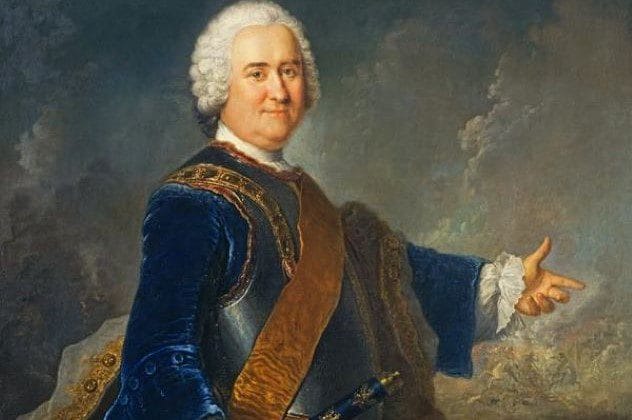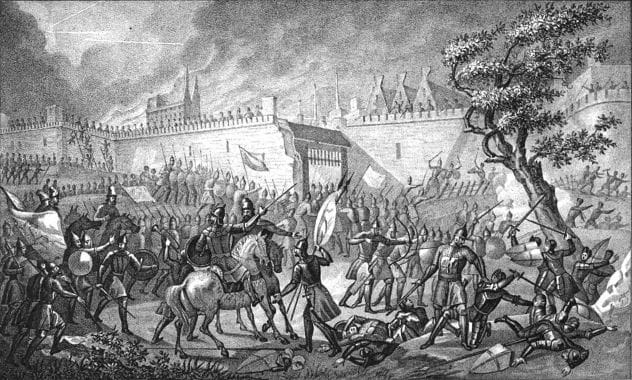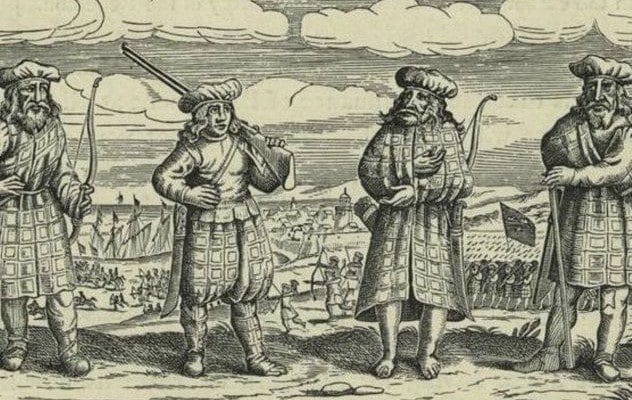Scotland has long been famed for its warriors, but beyond the tales of clans and kilts lies a rich history of Scottish soldiers venturing far from home. These weren’t just soldiers; they were mercenaries, selling their skills to the highest bidder, fighting in foreign wars, and often shaping the course of history. For centuries, Scottish fighters took their chances in distant lands, sometimes supporting monarchs, other times backing rebels. Wherever they went, their stories became legends.
From the sun-scorched deserts of Morocco to the icy Russian plains, Scottish mercenaries carved out legacies with their courage, cunning, and sometimes, sheer ruthlessness. Get ready to delve into the lives of 10 truly hardcore Scottish fighters whose stories are as diverse as the lands they roamed.
Peter McAleese
Born in Glasgow in 1942, Peter McAleese was a man forged in toughness. He once famously said, “I was trained to kill by the Army, but the fighting instinct came from Glasgow.” This formidable background made him a perfect leader for a band of mercenaries heading to Colombia in 1989. McAleese wasn’t new to high-stakes operations; he had served in Britain’s elite SAS.
After leaving the army in 1969, McAleese entered the perilous world of mercenary work. He saw action in African conflict zones like Angola and Rhodesia (now Zimbabwe). But his Colombian mission was extraordinary: hired by the Cali Cartel, his objective was to assassinate Pablo Escobar, the notorious leader of the rival Medellin Cartel. The plan involved a helicopter assault on Escobar’s compound. However, disaster struck when McAleese’s helicopter crashed in the Andes, severely injuring him. The mission was aborted, but McAleese managed to escape. He passed away in 2021 at the age of 79, while Escobar himself was killed in 1993.
Gregor MacGregor, Prince of Poyais
Gregor MacGregor, born on Christmas Eve in 1786, began his military life in a standard way. At just 16, he joined the British Army’s 57th Foot Regiment. He fought in the Napoleonic Wars, eventually reaching the rank of major before retiring his sword in 1810. His gaze then turned to South America, and he arrived in Venezuela in 1812.
MacGregor knew the revolutionary leader General Francisco de Miranda, who welcomed him as a colonel in the fight against Spanish colonial rule. MacGregor, who had flamboyantly knighted himself, rose to become a general in the Venezuelan Army. His adventures included an attempt to seize Florida from the Spanish and an effort to establish a colony in Nicaragua.
However, his most ambitious and infamous scheme was creating the “Principality of Poyais.” He claimed this territory in the Bay of Honduras and lured unsuspecting British investors and hopeful colonists with wildly exaggerated promises. The venture was a complete disaster, with many losing their fortunes. Yet, somehow, “Prince” Gregor managed to walk away from the debacle without facing serious consequences.
Patrick Leopold Gordon of Auchleuchries

Patrick Gordon, born in northeastern Scotland in 1635, left his homeland as a teenager. He journeyed to Danzig (now Gdańsk, Poland) and enrolled in a Jesuit college. When war broke out between Poland and Sweden in 1655, young Gordon found his calling as a mercenary. He wasn’t particularly loyal to one side, as he fought for both during the conflict.
In 1661, Gordon decided to leave both Poland and Sweden behind and joined the Russian army. As a major, he proved valuable by helping to quell civil unrest in Moscow in 1661. After Peter the Great ascended to power in 1696, Gordon became a trusted adviser and friend to the young Tsar, eventually earning the rank of general. He played a crucial role in stopping a palace coup attempt against Peter in 1698. He died a year later, a respected figure in Russian military circles.
James Francis Edward Keith

James Francis Edward Keith was a Scot of noble birth, the second son of Scotland’s 9th Earl Marischal. Despite his high standing, he was forced to flee his homeland after participating in the failed Jacobite uprising of 1715, which aimed to reclaim the British throne. He escaped to France and later ended up in Spain, where he became an officer in the Spanish Army. However, as a Protestant in a staunchly Catholic country, his advancement opportunities were limited, prompting him to seek his fortune in Russia.
In 1728, Keith was appointed colonel of a Russian regiment and saw combat against the Swedes. After his service with the Russians, Keith was eager for new challenges and joined the Prussian Army. He was heavily involved in the Seven Years’ War, a major conflict that engulfed Europe and North America. By then a Field Marshal, Keith fought at the Battle of Hochkirch in Germany in 1758. In this brutal engagement, 80,000 Austrians faced 31,000 Prussians. The Austrians overwhelmed the Prussians, killing 9,000 of them, including the valiant James Keith.
Archibald Ruthven of Forteviot

Archibald Ruthven hailed from a distinguished Scottish family; his father was Lord Ruthven. In 1572, Ruthven set sail for Scandinavia, accepting a position in the army of King Johan III of Sweden. The king’s first task for the Scot was to return to Scotland and recruit 2,000 mercenaries. Ruthven exceeded expectations, returning to Sweden with nearly 4,000 soldiers.
Ruthven soon found himself in a heated dispute over his soldiers’ pay. This led to the execution of a Scottish officer, Hugh Cahun, for embezzlement. Before his death, Cahun, perhaps unjustly, accused Ruthven of plotting to assassinate King Johan. Though seemingly cleared, Ruthven then sailed with his troops to Livonia on the Baltic Sea. There, a ferocious conflict with their German allies resulted in approximately 1,500 deaths. As a consequence of this bloody quarrel, Ruthven was once again accused of conspiring against King Johan. Despite his firm denials, the unfortunate Scot was imprisoned and ultimately died in jail.
Sir Harry Aubrey de Vere Maclean

Born into a prosperous Scottish family in 1848, the impressively named Sir Harry Aubrey de Vere Maclean joined the British Army in 1869. His service took him to Canada, Gibraltar, and Bermuda. After seven years in the army, Maclean resigned his commission. He then accepted a position as a drill instructor for the army of Mawlay Hassan, the Sultan of Morocco.
Shortly after arriving in Tangier, Maclean was given command of 400 infantry troops. His pay was set to increase once he learned Arabic, which he successfully did. When Abdul-Aziz succeeded Hassan as Sultan, he retained Maclean’s services, sending him on various missions across Moroccan provinces. However, life in Morocco wasn’t without its dangers. In 1907, Maclean was kidnapped and held for ransom for seven long months. The following year, Abdul-Aziz was overthrown by his brother, Mawlay Abdul-Hafiz. The new sultan was initially keen to keep Maclean on, but they couldn’t agree on contract terms. Maclean resigned and lived out his remaining years in Tangier until his death in 1920.
Peter Duffy
Peter Duffy, raised in the northern Scottish town of Elgin, was born into a privileged family in 1941. He attended Gordonstoun, the same prestigious private school that King Charles would attend a few years later. Later in life, Duffy became second-in-command of a mercenary group that attempted to stage a coup in the Seychelles Islands in 1981.
Duffy’s commander was the infamous “Mad” Mike Hoare, a notorious mercenary with many years of experience. Hoare and Duffy led a team of fighters composed of ex-Rhodesian soldiers and former South African special forces. Heavily armed, the men flew into the Seychelles on a commercial flight. Unfortunately for them, their plan unraveled when an airport official discovered an AK-47 in one man’s luggage. A firefight erupted, and Duffy and several others managed to escape by hijacking an Air India plane, leaving behind one fallen comrade. Several conspirators were tried in South Africa the following year. Duffy received a five-year sentence, while Hoare was sentenced to ten. Peter Duffy reportedly died a broken man in 1981.
George Sinclair
In 1612, Captain George Sinclair sailed from Scotland with a troop of Scottish mercenaries he had recruited in Caithness, located in the Scottish Highlands. Their mission was to support King Charles IX of Sweden, who was at war with his neighbor, Christian IV of Denmark. Sinclair and his approximately 300 men landed in Norway, intending to march overland to Sweden.
The Scots had critically misjudged the local sentiment. The Norwegians were far from pleased about a foreign mercenary force marching through their country. Just seven days after Sinclair and his men arrived on Norwegian soil, a local force sprang a deadly ambush. As the Scots entered a narrow valley, the Norwegians rolled massive boulders down the slopes, blocking their escape routes. With the mercenaries trapped, musketeers picked them off, killing more than 150. Sinclair himself was shot dead by a man named Berdon Sejelstad. Tragically, Sinclair’s wife and child, who had ill-advisedly accompanied the expedition, were also killed, though not before his wife reportedly stabbed one of the Norwegians to death.
Redshanks

The Redshanks were mercenaries primarily recruited from the Hebridean islands off Scotland’s northwest coast, though mainland Highlanders also joined their ranks. During the 16th century, they traveled to Ireland to fight alongside the Irish, who were resisting English encroachment on the Emerald Isle. Life in the Highlands and islands of Scotland could be extremely harsh, so many men eagerly accepted payment to fight for Irish lords.
In a notable instance, a regiment of Highland fighters effectively served as a wedding present. In 1569, Lady Agnes Campbell, daughter of the Earl of Argyll, married the Irish nobleman and chief Turlough Luineach O’Neill. She brought with her a formidable dowry of 1,200 Scottish mercenaries. Unsurprisingly, the English were deeply concerned by the continuous stream of Highland warriors arriving in Ireland. From the late 16th century onwards, English authorities began to offer payments—essentially bribes—to Highland clan chieftains. These payments were conditional on the chiefs keeping their men from traveling to Ireland to fight.
Alexander Leslie of Auchintoul

Alexander Leslie of Auchintoul was born into a landowning Scottish family in 1590, in the northeast of Scotland. Leslie’s mercenary career began in 1618, fighting for the Poles, during which he was captured by the Russians. After his release, by 1629, he was in the employ of the Swedes. The Swedish king, Gustav II Adolf, sent him to Moscow, and Leslie remained there, serving the Tsar.
When the Smolensk War, a conflict between Poland and Russia, erupted in 1632, Leslie played a key role. He brought regiments of mercenaries from various European countries, including England and Scotland, to fight for the Tsar. He returned to Scotland in 1637 and became entangled in the Civil War of the era, unfortunately on the losing side. Captured in battle in the Scottish Borders, he narrowly avoided execution, a fate that befell many of his comrades. However, he was banished and forbidden to return to Scotland. Leslie went back to Russia, where he achieved the rank of general, the first Scot to do so. His notable achievements included the capture of Smolensk from Polish control in 1654.
The sagas of these ten Scottish mercenaries offer a fascinating glimpse into a world where loyalty was often to coin and commander, and survival depended on skill and grit. From ambitious princes to hardened veterans, their journeys were fraught with peril, intrigue, and remarkable feats. These soldiers of fortune left an indelible mark on the military history of numerous nations, proving that the Scottish fighting spirit knew no borders. Their tales, a blend of heroism, opportunism, and sometimes tragedy, continue to captivate us, reminding us of the complex motivations that drive individuals to seek fortune in the crucible of war.
Which of these Scottish mercenaries’ stories did you find most captivating? Share your thoughts in the comments below!










